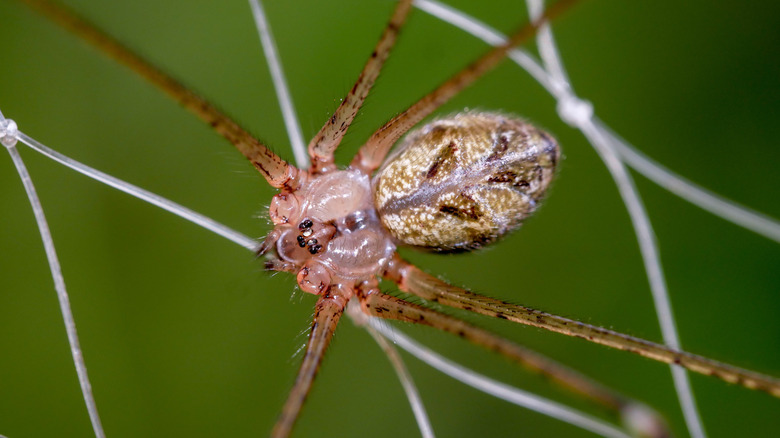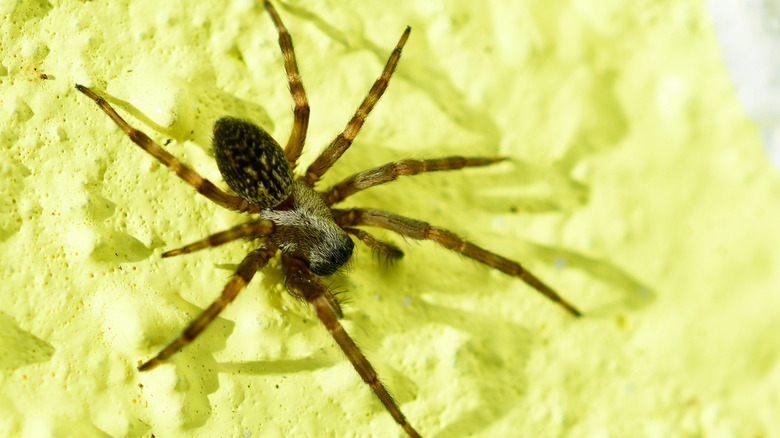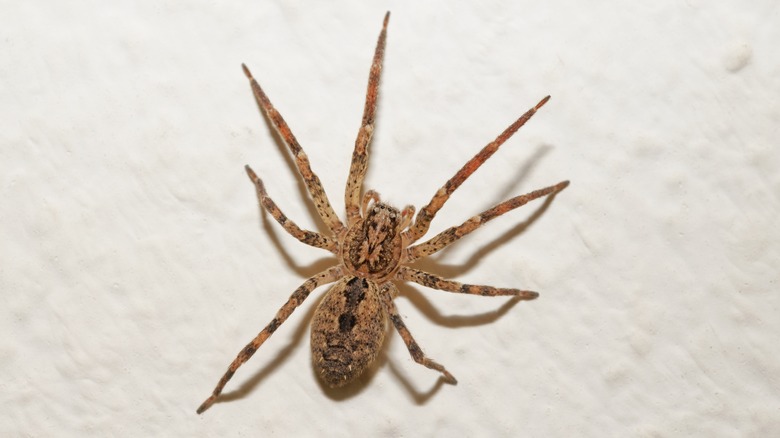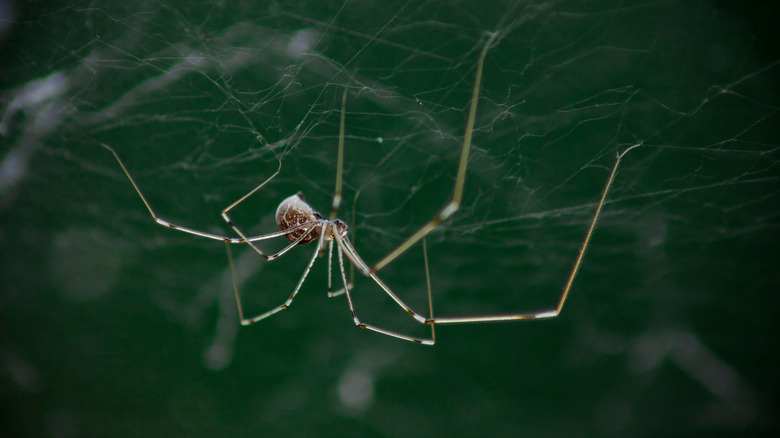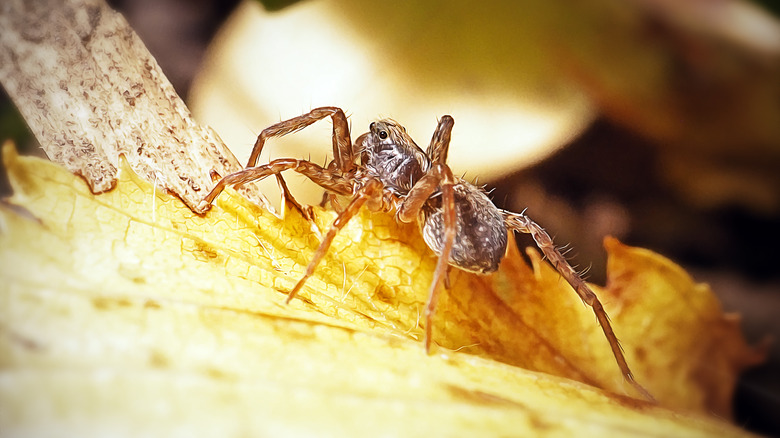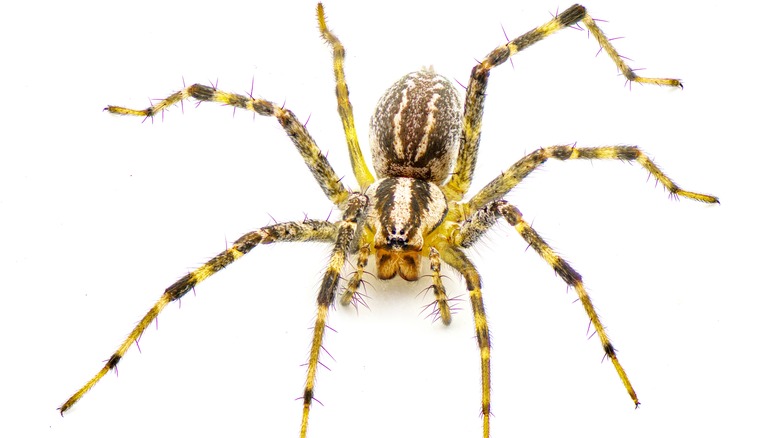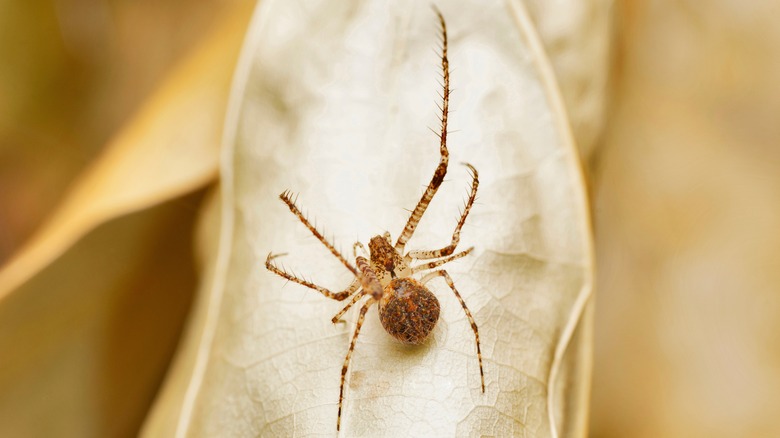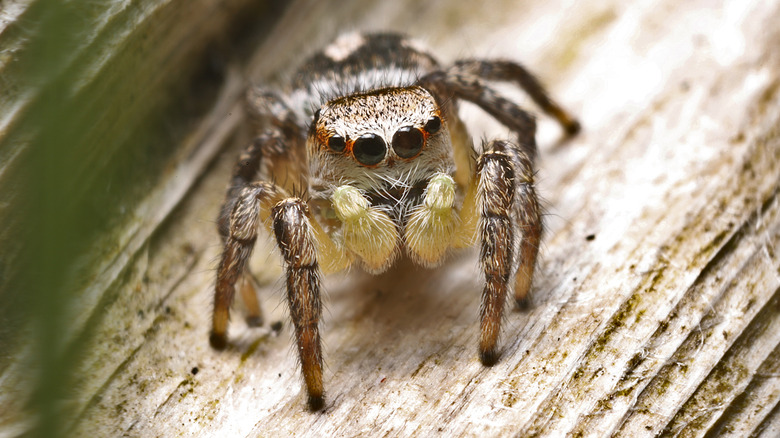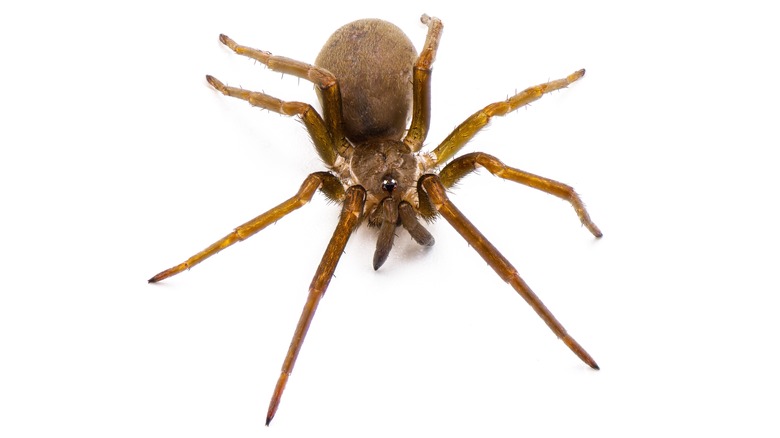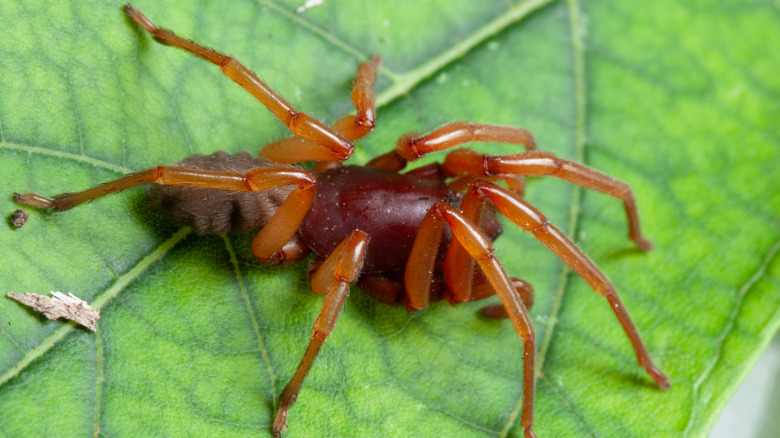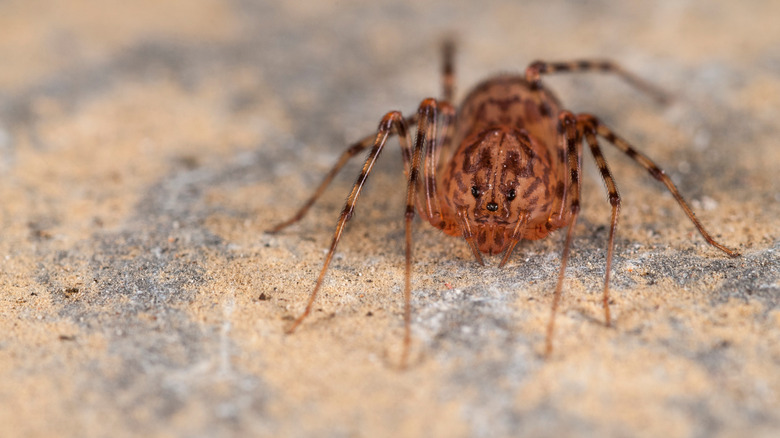Spiders In Your House That Might Be Mistaken For The Big Bad Brown Recluse
The mere mention of a brown recluse spider (Loxosceles reclusa) is enough to make anyone shudder. But, knowing one is lurking within your home is downright frightening. Their bites are notorious for their severity as they are the most common cause of spider-bite-related deaths. Though bites differ due to the size and sex of the spider, the brown recluse's venom is highly toxic. They're commonly identified by their coloring and violin-shaped markings. However, multiple species of spider share visual similarities yet are completely harmless.
Distinguishing species is important, especially if you've been bitten. It's worth noting that many spiders do not bite unless provoked. Humans are not a part of any spider's diet, so they only attack when they feel threatened. You may also want to allow certain spiders to take up residence in the corners of your home as they're actually quite beneficial. Spiders catch and eat insects that might otherwise infest a space. Being able to spot the difference between a brown recluse and another species will not only keep you safe, but it may help you with pest control.
Common house spider
The common house spider (Parasteatoda tepidariorum) is easily mistaken for a brown recluse. They are a similar shade of brown and about the same size with nearly identical legs. However, common house spiders do not have patterns and instead have a solid color cephalothorax. These spiders will likely reside in attics, basements, gardens, and sheds. While they do produce venom, a bite is not as problematic as that of a recluse and will typically only result in a red or itchy spot.
Hobo spider
At first glance, a hobo spiders (Eratigena agrestis) patterns are usually what cause alarm. But if you look closer, you'll find that it lacks the violin pattern that distinguishes brown recluses. Instead, they have a stripy pattern. They are also about the size of a nickel and have three pairs of eyes. While it's uncommon for one of these arachnids to leave their funnel web, bites can happen when they feel unsafe. Hobo spider bites affect about 50% of those bitten and symptoms range from painful bite sites and necrotic lesions to headaches.
Long-bodied cellar spider
Long-bodied cellar spiders (Pholcus phalangioides), are not only mistaken for brown recluses, they're also mistaken for harvestmen or daddy long-leg spiders. They have long and skinny legs and a peanut-shaped body that sets them apart. They have a pair of eyes in the center and a set of three eyes on either side. These spiders and other cellar spiders are considered harmless and can be left to their own devices. They're even known for preying on other harmful arachnid species, so they're a good little friend to have.
Wolf spider
When a wolf spider crosses your path, it may appear to be a brown recluse. Once you take a closer look, you'll see how different they actually are. Firstly, they're considerably larger than the recluse and they have eight eyes instead of six. Wolf spiders are found throughout the world whereas their more poisonous lookalikes stick to the midwestern and southern states. They're more active when hunting, but tend to inhabit wooded areas away from humans. Though their bites are harmless to us, small pets should be taken to the vet upon being bitten.
Grass spider
Grass spiders (Agelenopsis) share a few similarities to the brown recluse. They are both brown and like to live in similar habitats. To tell them apart, pay attention to their size, eyes, and web shape. They are larger than the quarter-sized recluse and have eight eyes as opposed to six. Additionally, they are funnel web weavers, meaning they create impressive thick webs with a hole and tunnel in the center. Brown recluse webs are irregularly shaped and far looser.
Pirate spider
Pirate spiders (Mimetus spp.) have a violin shape that causes concern. Yet they have their unique attributes. They have legs with visible spines and eight eyes. Their pattern may resemble that of a recluse, but only in shape. Their bodies have multiple colors, spots, and stripes. Visually, they've got more to see than a brown recluse. Mimetidea spiders are another species that will catch other spiders as well as the typical insects.
Jumping spider
Jumping spiders are sometimes mistaken for a more dangerous arachnid species, but these adorable little creatures needn't be feared and you shouldn't feel the need to kill them. In fact, some are even kept as pets. There are many species of jumping spider, but they all can be differentiated by their eyes and furry bodies. They have four pairs of eyes and the middle two are quite large. Though they're most likely to be found outside, they do sometimes choose to live near doors and windows where prey may enter.
Southern house spider
Male southern house spiders are mistaken for brown recluse spiders. However, they are larger, and their violin-shaped marking is more narrow than that of their lookalike. You can also tell them apart by their eight eyes. As their name suggests, they are commonly found in homes in the American South. They like to build webs in small holes, cracks, and crevices, typically on the exterior of a building.
Woodlouse spider
When a woodlouse spider scurries across your path, it's easy to misidentify. However, further inspection will reveal their unique characteristics. Many woodlouse spiders are reddish brown with light-colored cephalothorax. Their legs appear almost translucent and smooth without spines. While they have the same number of eyes as a recluse, their six eyes are arranged in an oval shape.
Spitting spider
Many of the 252 species of spitting spider resemble a brown recluse. They have six eyes and most have similar colors. However, their bodies are multicolored and their legs have banding while the recluse does not. Spitting spiders pose no risk to humans and will keep to themselves in dark crevices, corners, and perhaps even under a radiator.
